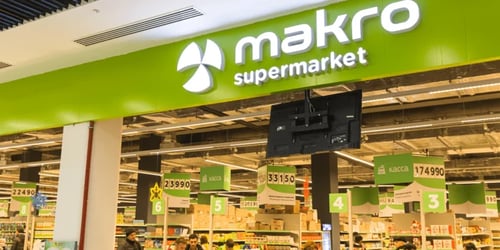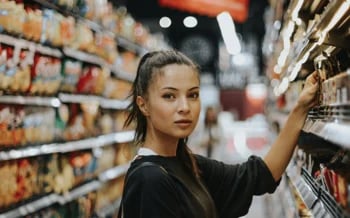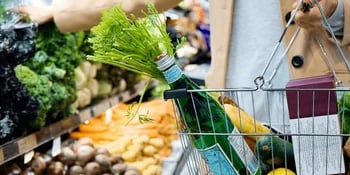
Transform Retail Operations with SAP Solutions



The current challenges in the retail industry reflect a mixture of aspirations and hurdles. According to Shopify:
- approximately 31% of brands want to expand their physical retail presence in the upcoming year
- 47% are concerned about the feasibility of securing affordable commercial leases
- another significant challenge is the quest for foot traffic, which worries 55% of brands
- furthermore, 32% of brands plan to integrate pop-up and in-person experiences
- with 40% emphasizing experiential retail
- nevertheless, coordinating these initiatives proves to be a formidable task for 57% of brands.
SAP Solutions for Retail
Sales and operational process management
SAP provides solutions that optimize operations, which can support higher sales through better execution, by:
- Centralizing retail operations to improve efficiency and transparency.
- Managing inventory and sales in real time to meet customer demand.
- Enabling precise demand planning and forecasting to adapt to market changes.
- Connecting planning and execution processes.
Show more
-
Centralize retail management and optimize sales and inventory management processes in real time.
-
Plan demand and manage inventory, considering changing market conditions.
-
Get real-time visibility into sales and customer transactions across all channels.
Customer experience management
SAP provides solutions that help retailers create personalized shopping experiences and strengthen customer engagement by:
- Delivering consistent interactions across stores, E-commerce, and mobile channels.
- Using customer data to personalize offers, promotions, and recommendations.
- Growing digital commerce channels to meet changing shopper expectations.
- Building trust and loyalty through data-driven engagement and responsive service.
Show more
-
Manage every aspect of the customer journey, from marketing to service.
-
Expand and scale your E-commerce channels to improve sales and customer service.
-
Strengthen customer relationships with data-driven personalization and tailored engagement.
-
Unify customer data from every touchpoint to personalize shopping journeys, improve targeting, and build loyalty.
Purchasing and supply management
SAP provides solutions that streamline purchasing and supplier engagement by:
- Automating purchasing workflows to reduce manual effort and errors.
- Enhancing supplier engagement and collaboration for stronger partnerships.
- Ensuring compliance, transparency, and cost efficiency across procurement processes.
- Optimizing inventory availability with real-time visibility into supply.
Show more
-
Automate procurement processes to reduce costs and improve the efficiency of sourcing, supplier qualification, contract management, invoicing, and payments.
-
Collaborate with suppliers, logistics providers, and partners in real time to improve supply chain visibility and resilience.
-
Manage requisitions, contracts, and invoices natively in SAP S/4HANA.
Data analytics and integration
SAP provides solutions that help retailers transform data into actionable insights and integrate processes by:
- Analyzing large volumes of business, financial, and operational data in real time.
- Visualizing KPIs and trends through interactive dashboards and reports.
- Supporting predictive analytics and planning to anticipate future outcomes.
- Enabling seamless integration of applications and data across the enterprise.
Show more
-
Use data and applications to make informed decisions, integrate merchandising and supply chain processes, and optimize store and E-commerce operations.
-
Visualize data and gain actionable insights to improve performance across retail channels.
-
Consolidate data from POS, ERP, and online platforms to create a single view of retail operations and customer behavior.
-
Orchestrate data from suppliers, logistics partners, and customer interactions to unlock value across the retail value chain.
HR management
SAP helps retailers create smooth employee experiences by:
- Onboarding seasonal staff quickly and preparing them with the right skills for customer-facing roles.
- Making scheduling and time tracking simple, transparent, and compliant with labor regulations.
- Keeping all employee information in one place to support efficient workforce management.
Show more
-
Attract, hire, and support the right talent.
-
Manage all employee data in one system to keep retail operations running smoothly.
Finance
SAP facilitates keeping finances under control by:
- Unifying financial processes to gain a clear view of costs, revenues, and store performance in real time.
- Simplifying planning, budgeting, and forecasting to quickly adapt to market changes.
- Managing liquidity and reducing financial risks while staying compliant with regulations.
Show more
-
Unify core financial processes and gain instant insights into margins, profitability, and performance across retail operations.
-
Integrate financial planning, budgeting, and forecasting with advanced analytics to improve accuracy and agility.
-
Optimize liquidity, manage payments, and control financial risks in a complex retail environment.
Asset management
SAP helps retailers take care of their assets and keep operations running smoothly by:
- Increasing equipment uptime with predictive maintenance and IoT insights for store, warehouse, and logistics assets.
- Enhancing reliability and safety through advanced analytics and real-time performance monitoring.
- Optimizing maintenance execution with mobile-enabled field service to fix issues quickly.
- Prioritizing and controlling investments in large-scale retail projects, such as new store openings or warehouse expansions.
- Streamlining resource scheduling for maintenance and operations to reduce downtime and costs.
Show more
-
Optimize asset performance, minimize downtime, and manage the full lifecycle of retail facilities, equipment, and infrastructure.
-
Monitor and improve asset reliability with IoT data, predictive analytics, and proactive maintenance.
-
Support maintenance staff with mobile tools to complete repairs faster and more efficiently.
-
Prioritize and control capital investments, from new store builds to supply chain upgrades.
-
Optimize workforce and resource allocation to ensure timely maintenance and smooth retail operations.
Product Lifecycle Management
SAP helps retailers design, develop, and manage products more efficiently by:
- Accelerating product development cycles to bring new collections and assortments to market faster.
- Collaborating seamlessly with suppliers and partners on product designs, materials, and packaging.
- Ensuring product compliance and traceability across the lifecycle, from design to shelf.
- Embedding sustainability into product development to meet customer expectations and regulatory standards.
- Managing product data centrally to ensure accuracy across merchandising, supply chain, and sales channels.
Show more
-
Manage the entire product lifecycle, from concept to retirement, with centralized product data and integrated processes.
-
Connect design, planning, and retail execution to shorten time-to-market and improve product quality.
-
Collaborate with internal teams and external partners on product design and innovation using cloud-based tools.
-
Design sustainable products and packaging, while ensuring compliance with global regulations.
AI & ML Use in the Retail Industry
Retail moves fast — with shifting demand, short product cycles, and high customer expectations. SAP systems already support sales, planning, and supply chain operations. AI adds speed, personalization, and precision where old models fall short.
Where AI adds an extra layer:
- Demand forecasting that adapts to trends, seasonality, and external factors.
- Real-time personalized offers based on shopping patterns and behavior (SAP Emarsys, SAP CDP).
- Dynamic pricing that responds to market, stock, and competitor data.
- Fraud detection across payment systems and loyalty programs.
SAP already offers AI tools to support planning, marketing, and operations. We help bring those tools into your system — or build custom AI and generative models based on your customer data, inventory structure, and retail logic.
How We Can Help

Consulting

Implementation

Integration

Support

Application management
Benefits of SAP Solutions for Retail
Real-time management
Personalized customer experiences
Transparent analytics
Operational automation
Scalable network expansion
Flexible margin management
Tackling Challenges Across Retail Subindustries with SAP
- Grocery and supermarkets
Optimize inventory turnover, forecast demand, and manage perishables. - Department stores
Coordinate multi-category operations, run promotions, and unify customer data. - Apparel and footwear retail
Plan seasonal collections, manage assortments, and fulfill orders across channels. - Electronics and appliance stores
Track warranties, manage stock visibility, and personalize upselling. - Home improvement and DIY stores
Handle complex SKUs, bundle project kits, and serve both B2B and B2C customers. - Furniture retail
Sell configurable products, coordinate delivery, and align showroom and warehouse inventory. - Health and beauty retail
Ensure product traceability, run targeted promotions, and comply with health regulations.
- Pharmacy and drugstore chains
Ensure compliance, track prescriptions, and control health product supply. - Luxury goods and jewelry retail
Enable personalized experiences, protect inventory, and enhance clienteling. - Sporting goods and outdoor equipment retail
Forecast by season, plan inventory, and sync store and warehouse data. - E-commerce and online marketplaces
Run digital storefronts, manage inventory in real time, and personalize marketing. - Omnichannel and direct-to-consumer brands
Unify customer data, coordinate orders, and integrate multiple sales channels. - Duty-free and travel retail
Segment travelers, manage customs compliance, and adjust pricing dynamically.
OUR PROPOSAL TO RETAIL
Grocery Store Mobile App
A custom app that allows getting all information about goods in store (price, manufacturer, distributor, composition, shelf life, promotions, etc.) via QR code scanning. This solution not only allows online payments but is also integrated with store loyalty programs/discount cards. Integrations with other retail systems used within the company ensure effective tracking of customer information, increasing their engagement and loyalty to the brand.
AI for Personalized Shopping
Development of this solution is based on Artificial Intelligence and Machine Learning technologies that allow for the delivery of advanced analytics on customer behavior. It contributes to the more personalized provision of services, whether the purchase takes place on the website or in stores. It means that you are reaching your customers with the correct message at the right time and place, thus increasing sales potential. Thanks to advanced analytics, you get an intimate understanding of changing consumer behaviors, wants, needs, and shopping patterns, as well as impacts of social, geographic, economic, and political factors.
AI for Personalized Shopping
Development of this solution is based on Artificial Intelligence and Machine Learning technologies that allow for the delivery of advanced analytics on customer behavior. It contributes to the more personalized provision of services, whether the purchase takes place on the website or in stores. It means that you are reaching your customers with the correct message at the right time and place, thus increasing sales potential. Thanks to advanced analytics, you get an intimate understanding of changing consumer behaviors, wants, needs, and shopping patterns, as well as impacts of social, geographic, economic, and political factors.
FEATURED CASE STUDIES

Transforming supermarket chain accounting processes
The client achieved enhanced financial transparency, improved resource allocation, increased productivity, compliance with international accounting norms, stronger stakeholder relations, scalability for future growth, and cost reductions in dealing with operational issues.

SAP TM Implementation for a large retailer
Our solution led to a 20% increase in trunk delivery vehicle productivity, a 3% increase in cargo capacity for long-distance delivery vehicles, a 3% increase in direct delivery machine productivity, a 2% reduction in tariffs for hired carriers, a 5% reduction in spot freight tariffs for hired carriers, reduced dead mileage, lower fuel consumption, and enhanced quality in goods delivery.

SAP customization project for a large food retailer
The modifications and developments have significantly enhanced the efficiency of the client's marketing and HR processes. Introducing new SAP BW reports has consolidated stock balance and damaged goods data, enabling business users to analyze and optimize distribution processes.
This strategic approach has directly contributed to increased profits from product sales for the client.
Want to learn more about our expertise?
Why LeverX?
Proven track record
Industry experts
SAP partnership
Quality and security
Investment in innovation
Flexibility
CONTACT US
If you are looking for an SAP Global Strategic Supplier or Technology Partner for your business, fill out the form below, and we will contact you at short notice.
Insights From Our Blog
All highlights-min-1-1.jpg?length=500&upscale=true&name=cover_352%D1%85240%20(1)-min-1-1.jpg)
Boosting Retail: Embracing 9 Technology Trends for 2025
Explore the Top Retail Trends of 2025. Learn how to increase sales with LeverX and SAP solutions. Leverage innovation today to lead tomorrow!

SAP TM Implementation for the Retail Industry
Drawing from our extensive experience working with SAP TM at LeverX, we aim to shed light on the manifold advantages of SAP TM integration within the retail industry

8 Challenges You Still Need To Overcome in Retail
Navigate the challenges in the retail landscape with LeverX's innovative SAP-powered solutions. Enhance efficiency and elevate your retail experience.
How to Succeed with LeverX
- Current processes evaluation: Assess existing business processes and identify the organization's needs.
- Defining technical requirements: Create a detailed specification of the functional and technical needs of the new system.
Discover
- Setting goals and objectives: Establish and agree on the goals to be achieved throughout the project.
- Assembling the project team: Appoint team members and define their roles and responsibilities.
- Project plan development: Create a comprehensive plan that outlines project phases, timelines, resources, and key performance indicators.
- Budget determination: Estimate and approve the budget.
- Specifications preparation: Develop the technical and functional specifications for the development team.
Prepare
- Ensuring business requirements are met: Check that SAP solution aligns with business requirements and project objectives.
- Data validation: Verify the accuracy and compliance of the data.
Explore
- Data migration: Transfer data from existing systems to the new one.
- System configuration: Set up the solution according to requirements and specifications.
- Customization: Develop additional features and modules, if the standard solution does not meet all needs.
- Integrations: Configure solution to work with other IT systems and applications.
Realize
- Testing: Perform functional, integration, regression, and load testing to ensure that all works correctly.
- User training: Organize sessions to help users become familiar with the new system.
Deploy
- System readiness check: Verify that the system is ready for operational use.
- Launch: Officially transition to active use of solution.
- Ongoing support: Continuously monitor solution performance to identify and resolve any issues.
Run
FAQ
What steps should I take as a retailer to prepare for a smooth SAP implementation?
How does LeverX ensure SAP solutions fit different retail subindustries (grocery, apparel, luxury goods)?
What are the typical timelines and costs for SAP retail implementation projects?
How does LeverX provide post-implementation support and training for our employees?
What are the most common challenges retailers face during SAP adoption, and how does LeverX address them?
Contact Us
What happens next?
-
1
An expert will reach out to you to discuss your specific needs and requirements.
-
2
We'll sign an NDA to ensure any sensitive information is kept secure and confidential.
-
3
We'll work with you to prepare a customized proposal based on the project's scope, timeline, and budget.
years of expertise
projects
professionals
Contact Us